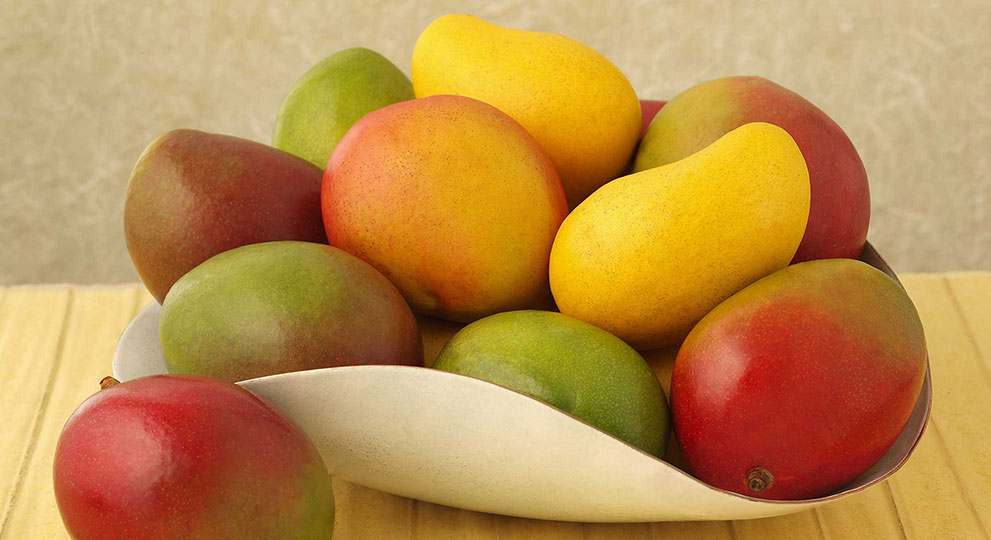
Fun Facts
- Mangos are one of the most popular fruit in the World
- Mangos were first grown in India over 5,000 years ago
- Mango seeds traveled with humans from Asia to the Middle East, East Africa and South America beginning around 300 or 400 A.D.
- The paisley pattern, developed in India, is based on the shape of a mango
- A basket of mangos is considered a gesture of friendship in India
- Legend says that Buddha meditated under the cool shade of a mango tree
- Mangos are related to cashews and pistachios
- A mango tree can grow as tall as 100 feet
- The bark, leaves, skin and pit of the mango have been used in folk remedies for centuries
Nutrition
- A one-cup serving of mangos is 100 calories
- Mangos provide 100% of your daily vitamin C, 35% of your daily vitamin A and 12% of your daily fiber
Selection and Ripening
- Don’t judge a mango by its color – red does not mean ripe
- Squeeze gently to judge ripeness
- A ripe mango will “give” slightly and a firm mango will ripen at room temperature over a few days
- To speed up ripening, place mangos in a paper bag at room temperature
- Once ripe, mangos can be moved to the refrigerator to slow down ripening for several days
Eating Mangos
- In many Latin American countries, mango on a stick with the skin peeled back is sold by street vendors
- Mangos can be enjoyed with salt, lime juice or chili powder for a unique flavor experience
- Mangos have natural tenderizing properties, making them a perfect ingredient for marinades
- Try the versatile mango in smoothies, salads, salsas, chutneys, on fish, chicken or pork, as a dessert or just plain as a delicious snack
Varieties, Seasons and Sources
- Most of the mangos sold in the U.S. come from Mexico, Peru, Ecuador, Brazil, Guatemala and Haiti
- Mangos are available all year long
- Most of the mangos sold in the U.S. are one of six varieties: Tommy Atkins, Haden, Kent, Keitt, Honey and Francis
Source: http://mango.org/en/About-Mangos/Mango-Facts

